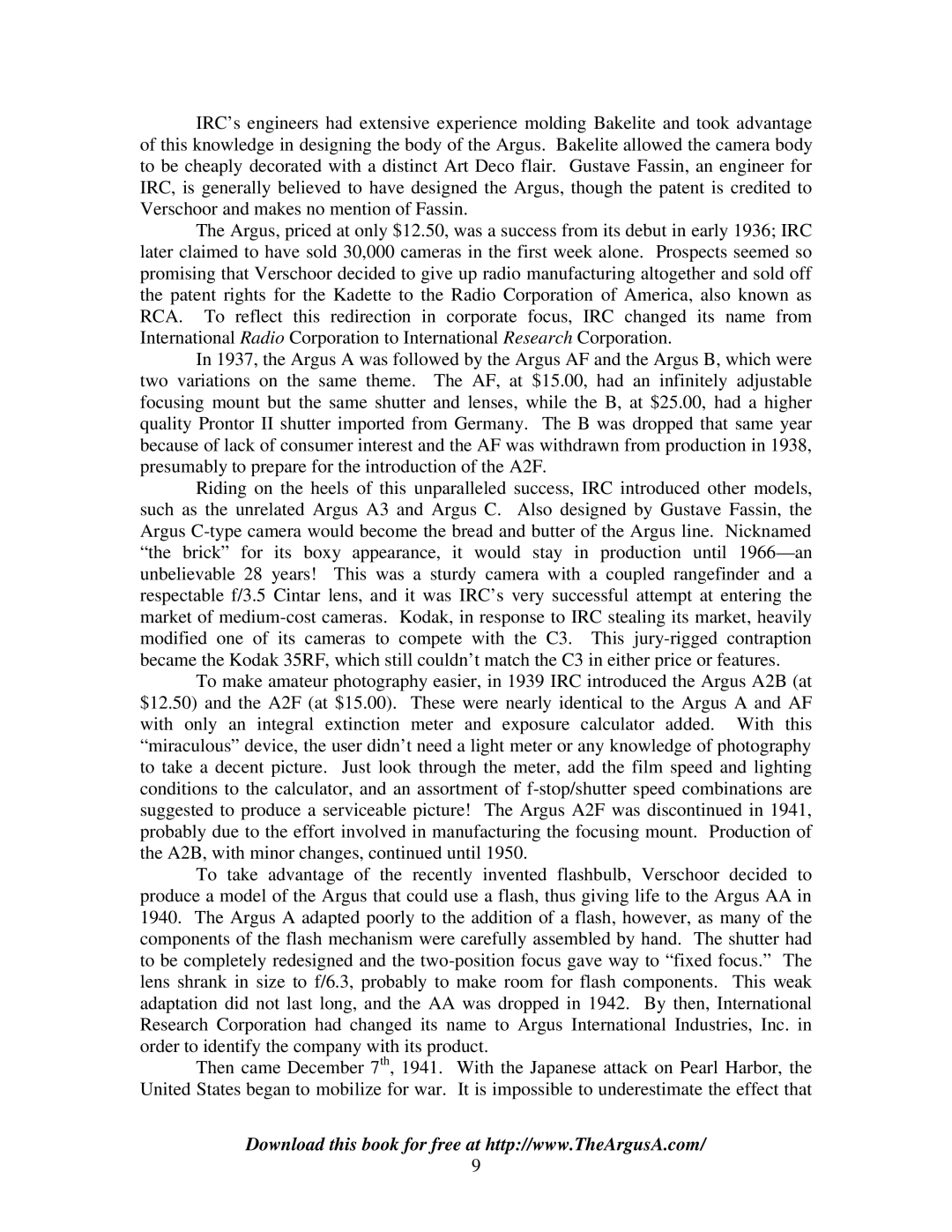IRC’s engineers had extensive experience molding Bakelite and took advantage of this knowledge in designing the body of the Argus. Bakelite allowed the camera body to be cheaply decorated with a distinct Art Deco flair. Gustave Fassin, an engineer for IRC, is generally believed to have designed the Argus, though the patent is credited to Verschoor and makes no mention of Fassin.
The Argus, priced at only $12.50, was a success from its debut in early 1936; IRC later claimed to have sold 30,000 cameras in the first week alone. Prospects seemed so promising that Verschoor decided to give up radio manufacturing altogether and sold off the patent rights for the Kadette to the Radio Corporation of America, also known as RCA. To reflect this redirection in corporate focus, IRC changed its name from International Radio Corporation to International Research Corporation.
In 1937, the Argus A was followed by the Argus AF and the Argus B, which were two variations on the same theme. The AF, at $15.00, had an infinitely adjustable focusing mount but the same shutter and lenses, while the B, at $25.00, had a higher quality Prontor II shutter imported from Germany. The B was dropped that same year because of lack of consumer interest and the AF was withdrawn from production in 1938, presumably to prepare for the introduction of the A2F.
Riding on the heels of this unparalleled success, IRC introduced other models, such as the unrelated Argus A3 and Argus C. Also designed by Gustave Fassin, the Argus
To make amateur photography easier, in 1939 IRC introduced the Argus A2B (at $12.50) and the A2F (at $15.00). These were nearly identical to the Argus A and AF with only an integral extinction meter and exposure calculator added. With this “miraculous” device, the user didn’t need a light meter or any knowledge of photography to take a decent picture. Just look through the meter, add the film speed and lighting conditions to the calculator, and an assortment of
To take advantage of the recently invented flashbulb, Verschoor decided to produce a model of the Argus that could use a flash, thus giving life to the Argus AA in 1940. The Argus A adapted poorly to the addition of a flash, however, as many of the components of the flash mechanism were carefully assembled by hand. The shutter had to be completely redesigned and the
Then came December 7th, 1941. With the Japanese attack on Pearl Harbor, the United States began to mobilize for war. It is impossible to underestimate the effect that
Download this book for free at http://www.TheArgusA.com/
9
